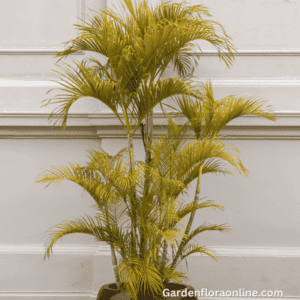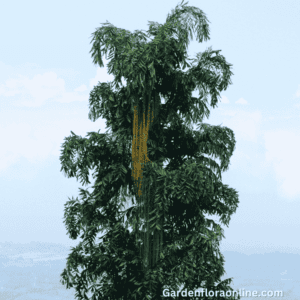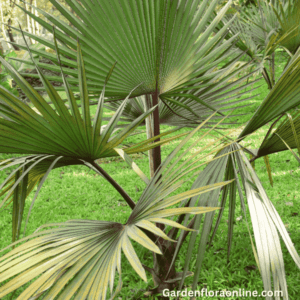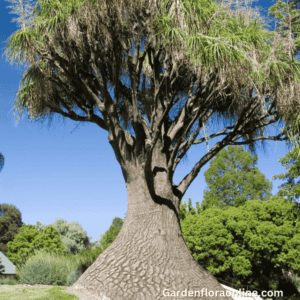Hyophorbe lagenicaulis (Bottle Palm)
Slow-growing evergreen palm with smooth, pale grey to white trunk, rounded and bottle-shaped when young, becoming elongated with age. Sparse canopy of 4-8 arching, glossy dark green, feather-like leaves up to 1.8 m long; each divided into ca. 140 slender, lance-shaped leaflets in two upward-pointing rows. Creamy-white flowers in branched inflorescences encircle trunk below crown, yielding small, oval fruits ca. 3.8 cm, green turning black when ripe.
Cultivation: Prefers full sun in well-drained moist soil, somewhat salt-tolerant but slightly prone to lethal yellowing and micronutrient deficiencies. Seeds germinate in 3–6 months.
Etymology: The genus name “Hyophorbe” is derived from the Greek words hys, hyos, meaning pig, and phorbe, meaning fodder, referring to the historical use of the fruits as pig feed. The specific epithet “lagenicaulis” is derived from the Latin words lagena, meaning flask or bottle, and caulis, meaning stem, describing the bottle-shaped trunk of this palm.








